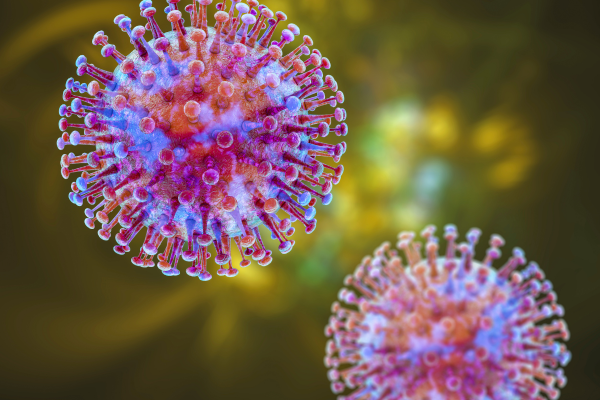How to Treat Rhino Virus?
- December 12, 2023
- No Comments

What is Rhinovirus and the Common Cold?
The common cold, often colloquially referred to as a rhinovirus infection, represents a prevalent upper respiratory infection that affects various components of the respiratory system, including the nose, throat, sinuses, and trachea (windpipe). Despite the common misconception linking the common cold to the coronavirus, it's essential to acknowledge that the common cold can be caused by more than 200 different viruses. Of these, the rhinovirus stands out as the most frequent culprit.
Why is Rhinovirus a Common Culprit?
- The designation of "common" in the common cold is indicative of its widespread occurrence. Individuals are likely to encounter the common cold more frequently in their lifetime than any other illness. This statistical reality is underscored by the fact that adults typically contend with two to three colds annually, while young children, with their developing immune systems, may experience four or more occurrences each year.
- The rhinovirus, specifically, is a prominent player in the realm of cold viruses. Its prevalence can be attributed to its highly contagious nature and its ability to exploit various avenues of transmission. Understanding the dynamics of rhinovirus transmission is crucial in both managing and preventing the common cold.
How Does Rhinovirus Spread and Manifest?
- Rhinovirus transmission primarily occurs through respiratory secretions, particularly when an infected individual coughs or sneezes. These tiny droplets, laden with the virus, can be inhaled by those in close proximity, facilitating the rapid spread of the infection. Additionally, the virus can linger on surfaces, presenting an indirect transmission risk. Touching contaminated objects and subsequently touching the face, especially the nose or mouth, can lead to infection.
- The seasonal prevalence of the common cold is also noteworthy. Rhinovirus thrives in cooler temperatures, making fall and spring seasons particularly conducive to its spread. The combination of close-quarters living during colder months and the increased survivability of the virus in lower temperatures creates an environment ripe for rhinovirus transmission
- Once the rhinovirus takes hold, it manifests with a range of symptoms affecting the respiratory system. The most common include a runny or stuffy nose, sneezing, coughing, and a sore throat. While these symptoms are generally mild, they can cause significant discomfort, disrupt daily activities, and, in some instances, lead to complications, especially in individuals with compromised immune systems.
Treatment Solutions for Rhinovirus:
Rest:
- Essential Component: Adequate rest plays a fundamental role in managing a rhinovirus infection.
- Rationale: Providing the body with the necessary downtime enables it to allocate energy resources to the immune response, promoting a more efficient recovery.
- Implementation: Ensure sufficient sleep and incorporate breaks during the day to support the body's healing processes.
Hydration:
- Crucial Fluid Intake: Maintaining adequate fluid intake is crucial during illness.
- Importance: Hydration is vital for mucous membrane function and overall immune system support.
- Application: Consume water, herbal teas, and clear broths throughout the day. Avoid excessive caffeine and alcohol, as they can contribute to dehydration.
Warm Saltwater Gargle:
- Sore Throat Alleviation: Gargling with warm saltwater aids in alleviating a sore throat.
- Mechanism: The saltwater helps reduce inflammation and provides temporary relief from throat discomfort.
- Procedure: Mix a teaspoon of salt in a glass of warm water and gargle several times a day.
Humidify the Air:
- Moisture Addition: Using a humidifier adds moisture to the air.
- Purpose: Moist air can soothe irritated nasal passages and help relieve congestion.
- Execution: Place a humidifier in the room where you spend the most time, especially during sleep.
Over-the-Counter Medications:
- Symptom-Specific Relief: Pain relievers, fever reducers, decongestants, cough suppressants target specific symptoms associated with rhinovirus infections.
- Objective: Alleviate symptoms and improve overall comfort.
- Guidelines: Follow recommended dosages. Consult a healthcare professional, especially if you have underlying health conditions.
Stay Home:
- Transmission Prevention: Limiting contact with others is essential to prevent the spread of the virus.
- Rationale: Rhinovirus is highly contagious, and staying home reduces the risk of infecting others.
- Execution: If possible, work from home and avoid crowded places until symptoms improve.
Benefit Points of Following Treatment Solutions:
- Symptom Relief: Each recommended solution targets specific symptoms, providing relief and improving overall comfort.
- Prevention of Complications: Adequate rest, hydration, and symptom management can help prevent the development of complications associated with respiratory infections.
- Reduced Transmission: Staying home when unwell and practicing good respiratory hygiene reduces the risk of spreading the virus to others.
- Improved Quality of Life: By addressing symptoms and supporting the body's recovery, individuals can maintain a better quality of life even while dealing with a rhinovirus infection.
Comments (0)